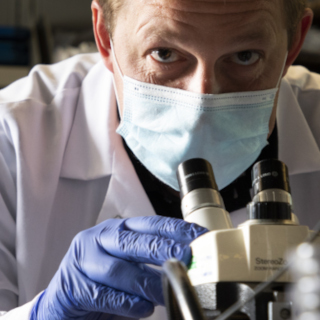Visitor Information, Health Sciences Building
VPR Letter Regarding Short-Term Visitors
January 3, 2022
To: Short-term visitors to Laboratory Animal Resources facilities
From: Scott Whittenburg, Institutional Official
RE: Occupational Health and Safety for Health Sciences Building LAR facility
Welcome to the University of Montana and the Department of Laboratory Animal Resources. We hope that your short visit with us will be enjoyable and productive. As even a one-time visitor to our facility, you are entitled to information concerning the physical, chemical, mechanical, radiation, and disease hazards that you may encounter in our facilities. You will also have the opportunity to participate in our occupational health and safety program. During your visit, we will appreciate having a record that you received this information when you sign in to visit or work in the facility.
Physical hazards
Caring for animals requires diligent daily cleaning of the facilities, including mopping. Slip hazards exist immediately after daily mopping in animal rooms as well as in the cage washing area, room 012 in the Health Sciences Building (HSB). The main corridor is mopped daily, Monday through Friday, between 3 and 5 p.m. Noise hazards may be encountered near large equipment such as the cage washer. Disposable hearing protection will be provided on request.
Chemical hazards
The primary chemicals that we use in large quantities are associated with the cage washer and are stored in the dirty cage washing area. There should be no reason for visitors to work with these chemicals. However, if you are splashed while visiting these areas, an emergency
Isoflurane anesthesia is used in some rooms, including HSB005C (USDA surgery) room and HSB016A (rodent surgery room). Doors are either marked clearly with a yellow hazard sign or allow only very limited access. Anesthetic gases are scavenged either actively through house vacuum or passively using charcoal canisters.
Mechanical hazards
The primary mechanical hazards encountered in our facility involve heavy lifting of food, bedding, or equipment. As a visitor, you will not be asked to perform these tasks.
Disease hazards
The most common hazard for persons working with or around laboratory animals is the development of allergies. If you know that you already have allergies, you are at higher risk for developing sensitivity to laboratory animals, particularly rodents. Development of allergies is generally associated with long-term exposure to animals, for months to years rather than a few days. Animals housed in this building may include degu, hamsters, rats, and mice.
The animals housed in our facilities are screened for a variety of diseases before entry and monitored daily for signs of illness. The chance of contracting a
Some research projects expose animals to biological agents. Rooms housing animals involved in these projects are clearly marked by door signs. Please do not attempt to handle any of these animals or their cages unless you have been trained by the principal investigator responsible for the project or his/her designee. Rodents exposed to the Lyme disease agent (Borrelia burgdorferi) are limited to HSB004, and the bacterium, Staphylococcus aureus may be used in HSB004 and 006A. Other animal-related bacteria and viruses are limited to use in HSB006A.
Please feel free to ask any further questions that you may have. We hope you have a
Office of The Vice President
Research and Creative Scholarship
University Hall 116
The University of Montana
Missoula, Montana 59812-4104
Phone: (406) 243-6670
Fax: (406) 243-6330
